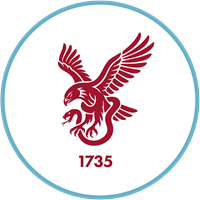Special Educational Needs and Disabilities
The Learning Support Department works passionately to ensure that every student in the school receives the best possible education and we are immensely proud of the school's inclusive nature. We recognise the strengths as well as challenges each student faces and tailor support to individual needs.
The Department is highly experienced and qualified and consists of a Special Educational Needs Co-ordinator (SENCo) plus sixteen Learning Support Assistants. In addition to classroom support and academic progress, we value the importance of developing social skills, communication, confidence, independence and high aspirations.
The work of the Department starts with primary school liaison and close contacts are maintained with all feeder schools ensuring that we are fully informed of student's needs and can prepare for their transition. Parental contact is paramount and starts with transition and continues throughout a student's time with us.
Learning Support is fully inclusive, and we deliver interventions as appropriate, with the minimum impact on the rest of a student's curriculum. Interventions include, amongst others, small group or individual literacy and numeracy support, targeted sports activities, communication groups, mentoring, horse-riding, break and lunch time support and alternative curriculum choices.
We hope that the questions below can provide you with some insight to the diagnosis and support of students with SEND at Lacon Childe School. They cannot cover everything we do, so if you have any further queries please contact us on [email protected] and this will be forwarded to the relevant member of staff.
What is SEND?
The Shropshire Local Offer dictates that and child or young person is said to have Special Educational Needs and Disabilities (SEND) if they:
- Have a significantly greater difficulty in learning than the majority of others of the same age.
- Have a disability which prevents or hinders them from making use of educational facilities of a kind generally provided for others of the same age in mainstream school of mainstream post-16 institutions.
The reasons behind the difficulties in learning and disabilities mentioned above are incredibly varied from student to student, but are classed into one of four categories of need. Many students’ needs fit clearly into one of these categories, whilst others’ span across two or more.
- Communication and Interaction
- – Students have difficulty with verbal or non-verbal communication; struggle with interactions with adults and/or their peers; needs such as these may reflect an Autistic Spectrum Condition (ASC). Students may also demonstrate difficulty in the production of speech; finding the correct language to use; understanding language. This is classed as Speech, Language and Communication Need (SLCN).
- Cognition and Learning
- – Students have difficulty with literacy and numeracy, or have levels of attainment significantly below age-related expectations. Some students have specific learning difficulties (SpLD), such as Dyscalculia, Dysgraphia, Dyslexia and Dyspraxia. Where difficulties are more general, known as global, conditions are classified as: Moderate Learning Difficulties (MLD) – students require support outside of the national curriculum. Severe Learning Difficulties (SLD) – students often require substantial support in all areas of a highly tailored curriculum. Profound and Multiple Learning Difficulty (PMLD) – students likely have several disabilities, with significant impacts on learning and independence.
- Social, Emotional and Mental Health
- – Students may show signs of withdrawal and wanting to be alone, or signs of hyperactivity and inattention. Conditions here include Anxiety and ADHD.
- Sensory and Physical
- – Students with difficulties in hearing, vision or movement who require modifications to the school environment.
What is the local offer?
The Local Offer is a reference point for all Shropshire schools to work from, in terms of their provision and services for students with SEND. It sets out the “Assess, Plan, Do, Review” process, explained below, which is used to provide and adapt support for students.
Assess, Plan, Do, Review
The Assess, Plan, Do, Review (APRD) approach is aimed at finding the appropriate support for students. If after one, or several cycles of support the students’ needs are not met then the support should be changed. This is known as the Graduated Response.
How do you identify student's additional needs?
A student’s needs can be raised via school staff, parents, or external agencies. The referring party will communicate with the SENDCo, who will then liaise with other stakeholders to discuss the support needed by the student, to begin the APDR process.
What support does a child on the SEND register receive?
This varies significantly based upon the specific needs of the student, which are likely dictated by any diagnoses they have. Support is tiered to find the appropriate level of support for the student.
Tier 1 – This support is available to all students in school but can be adapted with what are called “reasonable adjustments” where students need. Support at this level is termed “Quality First Teaching”, something we believe has huge power at Lacon Childe School. Our teaching and learning model is very much based on strategies which are research-backed as accessible and beneficial to all students, especially those with additional learning needs.
Tier 2 – Where Tier 1 support does not overcome the barriers to learning a student is experiencing they may need some additional supports put in place.
Tier 3 – Students may need further support from external agencies which school and parents can refer to. The suggestions from these agencies can then be put in place at in school and/or at home.


 already on the SEND register, or with concerns that they need additional support to be put in place, please contact our SENDCo, Tim Stiles on
already on the SEND register, or with concerns that they need additional support to be put in place, please contact our SENDCo, Tim Stiles on